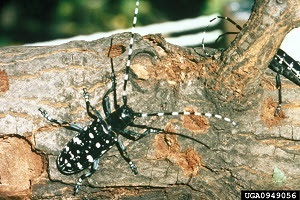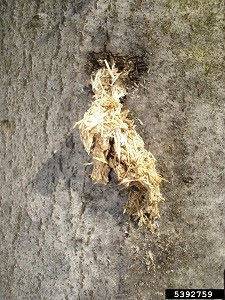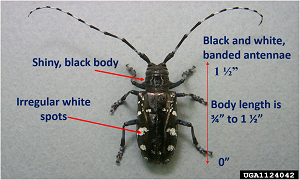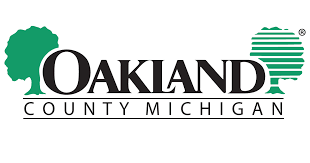MDHHS Requiring Testing of Agricultural and Food Processing Employees
MDHHS Issues Order Requiring Testing of Agricultural and Food Processing Employees to Protect Health and Safety of Workers, Community
FOR IMMEDIATE RELEASE
August 3, 2020
Contact: Lynn Sutfin, 517-241-2112
LANSING, MICH. Michigan Department of Health and Human Services (MDHHS) Director Robert Gordon has issued an Emergency Order requiring COVID-19 testing for agricultural and food processing employees. The order makes Michigan a national leader in COVID-19 safety protections for agricultural and migrant workers, building on Executive Orders from Gov. Gretchen Whitmer requiring workplace safety measures in meat and poultry processing plans and safe housing for COVID positive migrant workers.
“The men and women who work in our fields and food processing plants are at particular risk for COVID-19, and they need and deserve protection,” said Gordon. “Today’s order will help to reduce the spread of COVID in communities across Michigan and reduce the pandemic’s disparate impact on Latinos.”
In recent weeks, there have been 11 identified outbreaks in farms and food processing plants in Michigan. In addition, Latinos are 5 percent of Michigan’s population but represent 11 percent of COVID cases in which the individual’s ethnicity is identified.
The order requires migrant housing camp operators to provide COVID-19 testing as follows:
- One-time baseline testing of all residents ages 18 and over.
- Testing of all new residents with 48 hours of arrival, with separate housing for newly arriving residents for 14 days and a second test 10 – 14 days after arrival.
- Testing of any resident with symptoms or exposure.
Employers of migrant or seasonal workers, meat, poultry and egg processing facilities and greenhouses with over 20 employees on-site at a time to provide COVID-19 testing as follows:
- One-time baseline testing of all workers.
- Testing of all new workers prior to any in-person work.
- Testing of any worker with symptoms or exposure.
“The department will work with employers and housing operators to ensure timely reporting of testing data and access to PPE so that together we can prevent further viral spread,” Gordon said.
“Ensuring the health and safety of Michigan’s essential food and agriculture workers is paramount to keeping our food supply chain moving,” said Gary McDowell, director of the Michigan Department of Agriculture and Rural Development. “These workers are our frontline staff who are a vital part of bringing our food from farm to plate.”
“It is critical that we keep our workers and their families across the food and agriculture industry safe and healthy,” said John Cakmakci, president of UFCW Local 951. “I applaud Directors Gordon and McDowell for their efforts to protect the people of Michigan and our economy.”
Employers and housing operators must complete a plan by Aug. 10 for how they will conduct testing in compliance with this order. Completion of baseline testing and implementation of ongoing testing is required no later than Aug. 24.
Employers and housing operators have several options for completing the required testing, including contracting with a medical provider, occupational health provider or laboratory to arrange a testing program; requesting state assistance to conduct testing; or utilizing testing resources in the broader community. The state will provide testing support for employers or housing operators as its capacity allows and assist facilities in identifying other sources of testing capacity as needed.
MDHHS also released a guidance document for employers providing step-by-step information on how employers can complete testing and highlighting resources like grant funding and insurance coverage through Medicaid that can provide financial support for testing.
COVID positive and exposed residents would be required to isolate or quarantine until meeting the return-to-work criteria from the Centers for Disease Control and Prevention. MDHHS will be partnering with Community Action Agencies in impacted communities in order to provide food, housing, and economic support for workers who lose income due to testing.
Failure to comply with this order may result in the issuance of a civil monetary penalty under the authority of MCL 333.2262.
Information around this outbreak is changing rapidly. The latest information is available at Michigan.gov/Coronavirus and CDC.gov/Coronavirus.


 August is Tree Check Month, and the U.S. Department of Agriculture is asking the public to look for and report any signs of this invasive pest that’s not native to Michigan and could cause harm to our environment and economy.
August is Tree Check Month, and the U.S. Department of Agriculture is asking the public to look for and report any signs of this invasive pest that’s not native to Michigan and could cause harm to our environment and economy.
 The Asian longhorned beetle was first detected in the U.S. in 1996, when a Brooklyn, New York resident noticed a large, black beetle with irregular white spots and black-and-white banded antennae and reported it. Since that time, the Asian longhorned beetle has been found in 20 locations in six states, including New York, New Jersey, Massachusetts, Illinois, Ohio and, most recently, South Carolina.
The Asian longhorned beetle was first detected in the U.S. in 1996, when a Brooklyn, New York resident noticed a large, black beetle with irregular white spots and black-and-white banded antennae and reported it. Since that time, the Asian longhorned beetle has been found in 20 locations in six states, including New York, New Jersey, Massachusetts, Illinois, Ohio and, most recently, South Carolina.
 The beetle has not been detected in Michigan, but discovering early signs of infestation can prevent widespread damage to the state’s forest resources, urban landscapes and maple syrup production.
The beetle has not been detected in Michigan, but discovering early signs of infestation can prevent widespread damage to the state’s forest resources, urban landscapes and maple syrup production.
 Adult Asian longhorned beetles are distinctively large, ranging from 3/4 to 1 1/2 inches in length, not including their long antennae. The beetles are shiny black, with random white blotches or spots, and their antennae have alternating black and white segments. They have six legs that can be black or partly blue, with blue coloration sometimes extending to their feet.
Adult Asian longhorned beetles are distinctively large, ranging from 3/4 to 1 1/2 inches in length, not including their long antennae. The beetles are shiny black, with random white blotches or spots, and their antennae have alternating black and white segments. They have six legs that can be black or partly blue, with blue coloration sometimes extending to their feet.

 Gov. Gretchen Whitmer on Friday signed legislation creating more opportunities for quality outdoor recreation by authorizing $28.7 million in Michigan Natural Resources Trust Fund grants.
Gov. Gretchen Whitmer on Friday signed legislation creating more opportunities for quality outdoor recreation by authorizing $28.7 million in Michigan Natural Resources Trust Fund grants.
 “Michigan places a high value on quality, outdoor recreation opportunities,” said DNR Director Dan Eichinger. “Trust Fund grants have leveraged additional dollars from local government partners to expand outdoor recreation throughout the state and ensure conservation of Michigan’s unmatched natural resources.”
“Michigan places a high value on quality, outdoor recreation opportunities,” said DNR Director Dan Eichinger. “Trust Fund grants have leveraged additional dollars from local government partners to expand outdoor recreation throughout the state and ensure conservation of Michigan’s unmatched natural resources.”

 Several state parks in southern Michigan will host volunteer stewardship workdays in August. Volunteers are needed to help with removing invasive plants that threaten high-quality ecosystems in the parks.
Several state parks in southern Michigan will host volunteer stewardship workdays in August. Volunteers are needed to help with removing invasive plants that threaten high-quality ecosystems in the parks.
 The DNR welcomes public input on its plans for Michigan’s 3.85 million acres of state forest.
The DNR welcomes public input on its plans for Michigan’s 3.85 million acres of state forest.
 2020 collector-edition Michigan duck stamps and prints, which help ensure continued conservation of wetlands and waterfowl habitat, are now available for purchase.
2020 collector-edition Michigan duck stamps and prints, which help ensure continued conservation of wetlands and waterfowl habitat, are now available for purchase.
 The DNR is responsible for nearly 4.6 million acres of public lands owned by Michigan residents. When these lands – state parks, trails, game and wildlife areas, forests and other resources – are well managed, they contribute significantly to the health of Michigan’s residents, environment and economy.
The DNR is responsible for nearly 4.6 million acres of public lands owned by Michigan residents. When these lands – state parks, trails, game and wildlife areas, forests and other resources – are well managed, they contribute significantly to the health of Michigan’s residents, environment and economy.
